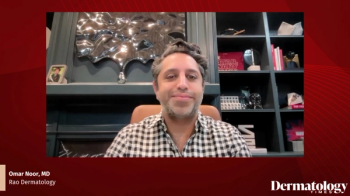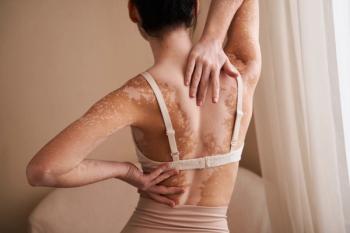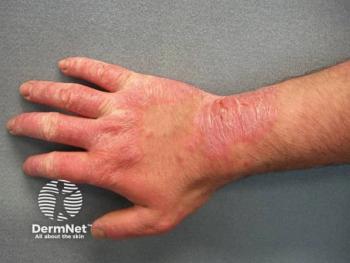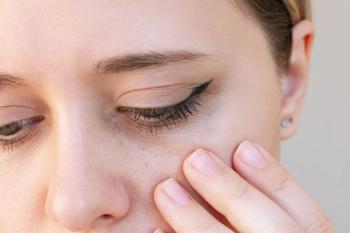
Shaant ClearSkin Probiotic Granted Patent for Acne Relief
Key Takeaways
- Codex Labs' Shaant ClearSkin Probiotic targets acne through the gut-brain-skin-microbiome axis, integrating probiotics and botanicals to enhance gut health and modulate inflammation.
- Clinical study results showed significant reductions in acne lesions and beneficial changes in gut microbiota, supporting the supplement's potential efficacy.
Discover how Shaant ClearSkin Probiotic offers a holistic approach to acne treatment by targeting gut health and hormonal balance for clearer skin.
Codex Labs, a Silicon Valley-based skintech company, announced today that its product Shaant ClearSkin Probiotic has received US Patent No. 12,194,068. This formulation, aimed at managing oily and acne-prone skin, is part of Codex Labs' broader integrative approach that connects dermatological health with the gut-brain-skin-microbiome axis. This aligns with growing evidence that systemic factors such as gut microbiota, hormonal balance, and metabolic function influence the pathogenesis of acne.1
“At Codex Labs, we believe that the skin-gut-brain-microbiome axes are interrelated, and that next generation solutions for skin conditions such as acne will require integration of topicals with core supplements, diet, lifestyle, and mental health, to achieve optimum relief,” stated Barbara Paldus, PhD, CEO of Codex Labs, in a news release.
The Shaant ClearSkin Probiotic is an oral synbiotic supplement developed in collaboration with Jessica Maloh, ND, and Raja Sivamani, MD, both proponents of integrative dermatology. It contains a proprietary blend of 3 core and 6 supportive probiotic strains, as well as bioactive botanicals including guggul (Commiphora mukul), green tea extract (epigallocatechin gallate, or EGCG), and riboflavin (vitamin B2). These ingredients are designed to enhance gut microbiome health, modulate inflammation, and support skin integrity through improved gut barrier function and reduced oxidative stress.
“While the use of conventional topical and oral acne treatments, alone or in combination, provide proven relief for acne sufferers, there still exists a need for more holistic yet science-based treatment options,” stated Maloh. “With the Shaant ClearSkin Probiotic 2.0, we are excited to bring a new, integrative approach focused on leveraging the connections between gut barrier integrity, gut microbiome diversity, as well as blood lipid and free hormone levels with skin health.”
A pivotal independent clinical study, published in Dermatology and Therapy (Heidelberg), evaluated the efficacy of this synbiotic formulation in comparison with a myoinositol-based herbal supplement in subjects with non-cystic acne. The randomized, 8-week trial involved 36 participants aged 12 to 45 and was conducted at Integrative Skin Science and Research in Sacramento, CA.2
Researchers stated participants receiving the Shaant synbiotic demonstrated statistically significant improvements by week 8. Inflammatory lesion counts decreased by 58.2%, and non-inflammatory lesions dropped by 49.2%. Additionally, they found stool analysis showed a 51% increase in butyric acid, a short-chain fatty acid (SCFA) associated with enhanced gut barrier integrity and anti-inflammatory effects. Plasma concentrations of propionic acid significantly decreased, indicating systemic metabolic shifts.
Hormonal analysis revealed a downward trend in salivary progesterone levels from 26.8 to 10.5 pg/mL, suggesting that the supplement may influence androgen-related pathways known to exacerbate acne. While changes in DHEAS and aldosterone were not statistically significant, the overall pattern supports a potential endocrine-modulating effect.
Microbiome sequencing identified increases in beneficial bacteria such as Faecalibacterium prausnitzii, Prevotellacopri, and Blautia species. Concurrent reductions in potentially pathogenic bacteria such as Clostridioides difficile and Bilophila wadsworthia were observed. These microbial changes likely contributed to the rise in SCFAs and correlated with clinical improvements in acne severity.
The formulation's components are supported by prior research. For instance, EGCG from green tea has demonstrated anti-inflammatory and antimicrobial activity against Cutibacterium acnes, while guggul has shown efficacy in modulating sebum production and lipid metabolism. The combined use of probiotics and phytochemicals in the Shaant formulation is consistent with the growing trend toward synbiotics—combinations of probiotics and prebiotics designed to optimize gut microbiota composition.
The study reported no serious adverse events. Mild events included headache and transient anxiety in a few subjects, but these were not conclusively linked to the supplement.
While the Shaant ClearSkin Probiotic demonstrated promising results, limitations of the study include the relatively small sample size and absence of a placebo control group. Furthermore, long-term outcomes and comparative efficacy against standard pharmaceutical treatments remain to be evaluated in future trials.
Overall, the Shaant ClearSkin Probiotic represents a novel integrative strategy for addressing acne by targeting systemic contributors such as the gut microbiome and hormonal regulation. Clinical findings support its potential utility as part of a holistic acne management plan, especially for individuals seeking non-pharmacologic interventions. Further large-scale, controlled studies are warranted to validate these preliminary results and explore its long-term efficacy and safety profile.
References
- Codex Labs Shaant ClearSkin probiotic 2.0 supplement for oily and acne-prone skin is awarded US patent. News Release. Global Newswire. Published May 20, 2025. Accessed May 20, 2025.
https://www.globenewswire.com/news-release/2025/05/20/3084915/0/en/Codex-Labs-Shaant-ClearSkin-Probiotic-2-0-Supplement-for-Oily-and-Acne-Prone-Skin-Is-Awarded-U-S-Patent.html - Min M, Afzal N, Maloh J, et al. Prospective comparative study of an oral synbiotic and a myoinositol-based herbal supplement in modifying hormone levels and the gut microbiome in non-cystic acne. Dermatol Ther (Heidelb). Published online April 18, 2025. doi:10.1007/s13555-025-01411-4
Newsletter
Like what you’re reading? Subscribe to Dermatology Times for weekly updates on therapies, innovations, and real-world practice tips.



















